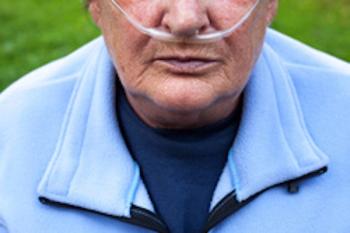
The results of a new longitudinal analysis cast doubt on the utility of serial interferon assessment.

The results of a new longitudinal analysis cast doubt on the utility of serial interferon assessment.

Camille Hertzka, vice president, head of oncology, US Medical, AstraZeneca, discusses why it is important to test for HRR gene mutation status and appropriateness of olaparib use in patients with metastatic castrate-resistant prostate cancer (mCRPC).

The nasal polyposis quality of life (NPQ) questionnaire was shown to be valid, reliable, and sensitive to individual changes in evaluating the health-related quality of life of patients with chronic rhinosinusitis with nasal polyps.

From one-stop testing and treatment sites to boosting research and surveillance, Biden administration health officials expanded on the COVID-19 plan the president announced in his State of the Union address Tuesday night, but the plan will require additional funding from Congress.

NAACOS announced the launch of the ACO REACH Coalition; US lawmakers signed a letter asking PhRMA President Stephen Ubl to explain the cause of drug price increases; of 222 Montana schools, 110 reported at least 1 sink or water fountain with lead levels above 15 parts per billion.

Thermo Fisher Scientific will begin accepting submissions for grant proposals focusing on molecular profiling in cancer spaces, where applicants could receive up to $200,000 in funding.

A recent review found that families caring for a loved one with kidney failure lack information and continuity of care from health care professionals.

The economic burden of rare diseases based on direct, indirect, and mortality-related costs is 10 times greater than the burden for mass market diseases, such as diabetes and cardiovascular disease, and this burden increases when no treatment is available.

Debra Patt, MD, PhD, MBA, executive vice president of Texas Oncology, addresses roadblocks to cancer screenings first thrown up by the COVID-19 pandemic in 2020 and that continue to reverberate today.

According to data from the Global Burden of Disease study 2019, osteoarthritis (OA) is still globally prevalent and is expected to increase due to rising obesity and the aging of populations.

A new study has investigated the influence of xanthine oxidase activity and mitochondrial DNA damage–associated molecular patterns on heart failure and cardiac remodeling among Black adults with resistant hypertension.

Steven Feldman, MD, PhD, professor of dermatology at Wake Forest School of Medicine, discusses what makes clascoterone (Winlevi) different from past acne treatments.

Uncontrolled disease burden was a major unmet need among children with moderate to severe atopic dermatitis (AD) who were unresponsive to topical therapies.

The data largely align with outcomes in high-income countries, with male sex and people with low body weight at particular high risk of mortality.

Biocon Biologics announced that it will be acquiring Viatris’ biosimilars portfolio for close to $3 billion.

A study finds that lower-dose vaccines given to children aged 5 to 11 years provides less protection against infection; President Joe Biden will announce a major overhaul of nursing home quality during his State of the Union speech; United Nations report highlights need for drastic action to address climate change.

FDA approval is based on CARTITUDE-1, a phase 1b/2 trial in which investigators reported that cilta-cel produced an objective response rate (ORR) of 98% and a stringent complete response rate of 78%.

Jill Hutt, vice president of member services at the Greater Philadelphia Business Coalition on Health (GPBCH), outlines how Wilmington, Delaware, went about implementing the Diabetes Prevention Program.

Kashyap Patel, MD, CEO of Carolina Blood and Cancer Care Associates, and current president of the Community Oncology Alliance (COA), speaks on what he’s looking forward to for his first in-person Community Oncology Conference as COA president.

This new study of women who underwent mammographic screening for breast cancer at a Breast Cancer Surveillance Consortium facility between 2000 and 2018 investigated potential implications of overdiagnosis.

A recent study found that early interventions are vital in childhood cases of insomnia, as symptoms do not fully remit in at least 60% of cases.

A study showed that patients with multiple myeloma (MM) deal with physical, social, and emotional pain and that physicians did not fully comprehend the extent to which patients experienced pain, suggesting improved communication between parties is warranted.

The prior authorization process is a hurdle to getting care for individuals with rare diseases and limited options, according to a rheumatologist and a patient interviewed just before Rare Disease Day.

Judith Lavrich, MD, and Jordan Hamburger discuss the need for more research on the impact of screen time on eye health following their study on virtual school and children's eyesight.

According to authors of a cross-sectional study, abnormalities in thalamic functional connectivity are a likely mechanism for migraine development.

Clinical response to ustekinumab for patients with psoriasis was shown to vary by body region, in which lower extremities were identified as the most difficult to treat.

Integrating plasma next-generation sequencing (NGS) alongside tissue testing when determining lung cancer diagnosis may improve outcomes for patients.

New CDC guidance says that Americans who live in areas with low to medium COVID-19 transmission can stop wearing masks indoors; GlaxoSmithKline (GSK) halts 3 vaccine clinical trials for the respiratory syncytial virus in pregnant women; a scientific advisory panel recommends a major overhaul of the US transplant system.

Rachna Shroff, MD, associate dean of clinical and translational research and associate professor of medicine at the University of Arizona, offered a review of early-stage research in her talk, “The Hottest Targeted Therapies on the Horizon for Cholangiocarcinoma.”

William Schaffner, MD, medical director at the National Foundation for Infectious Diseases (NFID), and Patsy Stinchfield, RN, MS, CPNP, president-elect of NFID, discuss how respiratory syncytial virus (RSV) affects different age groups.

259 Prospect Plains Rd, Bldg H
Cranbury, NJ 08512
© 2025 MJH Life Sciences®
All rights reserved.
